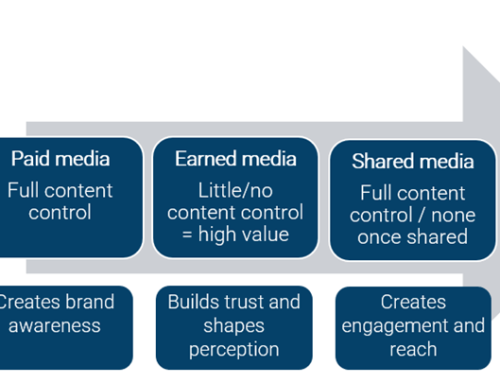Content marketing has almost replaced marketing, or at least PR or comms, as disciplines in many b2b sectors, but it’s become such a catch-all term that it’s almost achieved the opposite of what its pioneers intended. Content marketing was conceived to demonstrate the irrelevance of building activities based on channels or tactics and to show the importance of integration based on strong (largely non-promotional) content. It was born at a time when media channels and options were exploding at a rate that marketers struggled to keep up with, so took on a meaning beyond the simplicity of its concept.
Today, b2b marketers are much more comfortable with the term content marketing and focus on creating quality content that showcases their company’s expertise, knowledge or specialisms. However, somewhere along the line, many practitioners have neglected the importance of commerciality and ensuring all content drives appropriate action. ‘Thought leadership’ is disproportionately prioritised in some instances and the efforts some organisations are going to to be seen as an expert don’t always translate to increased sales.
Now, content marketing is becoming more sophisticated in b2b and content is being developed that fits with every buyer or influencer’s decision-making stage, from education and awareness, to interest, desire and action. Having a mix of content in terms of the desired impact on the audience, but also variety of format and understanding how to get it to the right people at the right time, is the real skill of today’s b2b content marketers.
We plan and implement action-oriented content marketing strategies for technical and scientific b2b clients and think that the following considerations should be at the forefront of people’s minds in 2017.
- It’s not how much content you create, it’s what you do with it!
Having a catalogue of content that spans every possible service or product offering, market segment and audience profile is the ideal, but is often unachievable – especially in fast-changing b2b markets of today – but it’s also futile unless you use the content well. Putting it all up on your website and hoping it will be read is really underselling it. Our proven content cascade model takes core content pieces relating to major business, market priorities or opportunity areas and amplifies them via multiple channels and formats to get the widest reach, while achieving impactful targeting and traceable results.
- Get others to create your content for you
Some savvy b2b marketers are realising that investing in teams of internal or bought-in content developers might not always be the most efficient use of resource. We help clients to develop programmes that leverage customers and influencers, such as industry key opinion leaders (KOLs), to create content that is often more compelling due to its third party endorsement nature. Engaging with customers in this way also gets valuable direct feedback that they might not give to your sales teams.
- Stop being scared of social!
The time really has come for b2b senior managers to stop worrying about social media. Marketers usually understand the pros and cons, but it can be difficult to convince senior management to let you test the water or launch a campaign due to misconceptions and nerves. Social media in b2b is simply about creating your own audience and maximising the reach of your marketing content (which, in turn, supports your branding, marketing and even sales objectives). It can also support customer service, employee and community comms initiatives and recruitment. Building social into your wider programme is a no-brainer. It’s really not as hard or scary as most people think!
- Invest in audience insight
Content will never result in action if it does not capture the imagination of your audience. Truly understanding their buying motivations, pain points, challenges and expectations is the only way to ensure your content is going to have the right impact. Collecting audience insight is also not as hard as some people think. Talk regularly to customers and prospects, as well as investing in surveying the wider market when it makes sense to do so. Never rely on secondary research – it’s unlikely anyone else has asked the right questions to the right people that will give your content and marketing activities the gems they need to succeed.
- Trade shows still haven’t died (luckily)!
Originally, content marketing was often described as purely or mostly online. As a result, offline marketing opportunities like trade shows, direct mail and sales tools were snubbed. However, most b2b marketers now understand that these channels can play a significant role in a good content plan. The predictions that trade shows would dwindle haven’t come to pass and conversely, shows seem busier than ever. Today, building your tradeshow presence around enticing, thought-provoking and solution-oriented content is a critical way to attract attention and stand out from other exhibitors.
If you are looking for some advice or support with your technical or scientific content marketing plans for 2017, give us a call on +44 (0) 1477 539 539 or email [email protected].
By Louise Reid, Director of Client Services at The Scott Partnership.





